Editor’s Note: Dan Berger will return next week. In the meantime, we’re highlighting efforts by the team at Grgich Hills Estate to advance regenerative farming in Napa Valley.
We Need Your Help
If you’re reading this, you care about independent, locally owned, ad-free journalism — reporting that puts our region’s stories first, not corporate interests or clickbait.
Join a community that values in-depth, independent reporting. Become a paid subscriber today — and if you already are, thank you. Help us grow by liking, commenting and sharing our work.
Grgich Hills — Custodians of a Sacred Place
By Tim Carl
NAPA VALLEY, Calif. — When Ivo Jeramaz talks about farming, his words are practical, not promotional. His tone is steady, his focus shaped by decades among the vines. As vice president of vineyards and production at Grgich Hills Estate, Jeramaz carries forward the work of his uncle, Miljenko “Mike” Grgich (1923–2023), whose winemaking helped usher in a new era of international recognition for Napa Valley.
Now, alongside Mike’s daughter, Violet Grgich, who serves as president of the winery, Jeramaz is helping evolve that legacy. Rather than focusing on yield or chasing consumer trends, the team at Grgich Hills is turning its attention below the surface — prioritizing soil health, microbial diversity and the long-term resilience of their vineyards through regenerative farming.
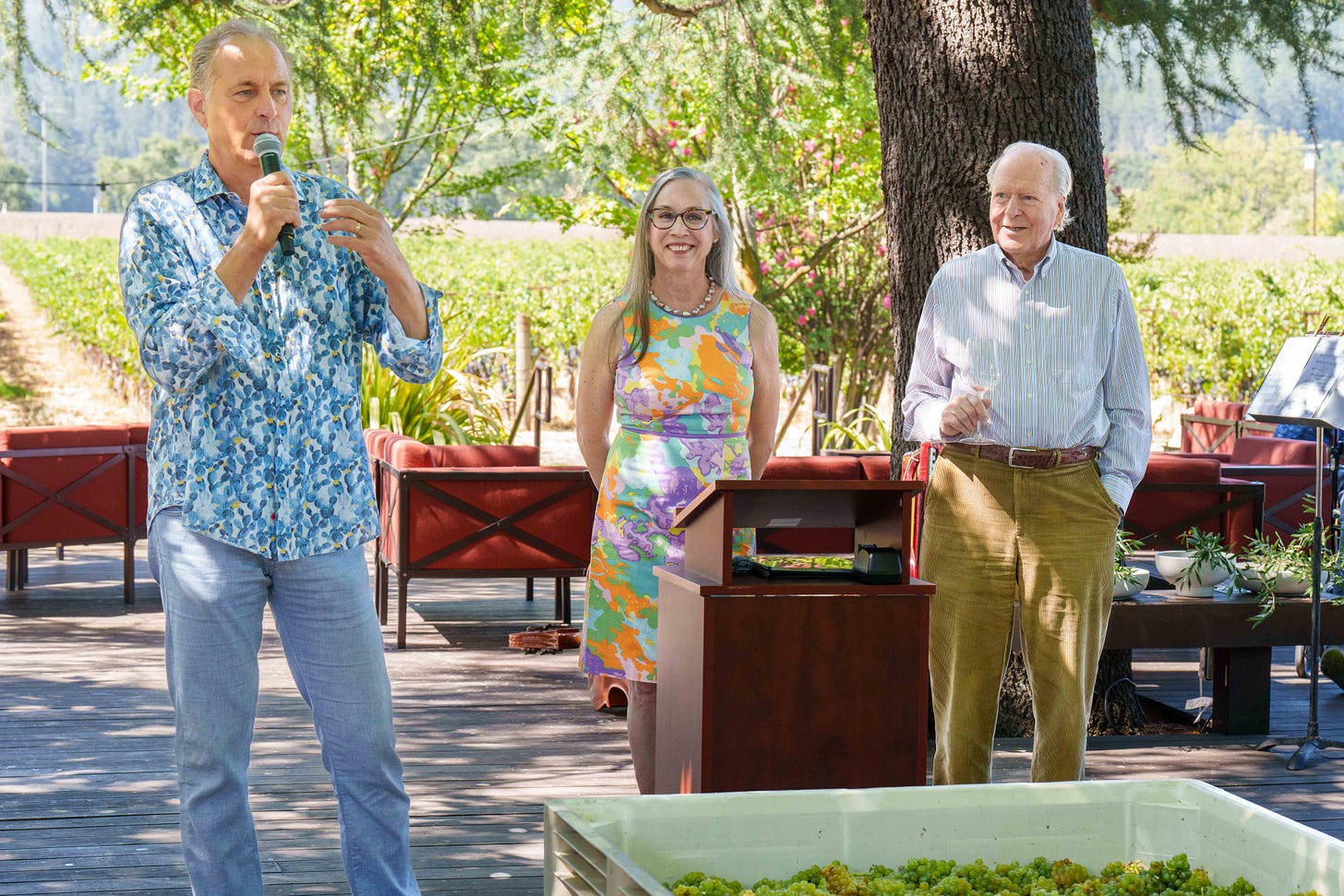
Beyond Sustainability
Jeramaz grew up in the former Yugoslavia, now Croatia, where his family’s garden provided most of what they ate. He worked on the farm reluctantly, often preferring basketball to pulling weeds. But those early experiences planted something deeper. He went on to earn a master’s degree in engineering before moving to the United States in the 1980s to join his uncle, Mike Grgich, at the winery. He started at Grgich Hills in 1986 and has since become one of Napa Valley’s most vocal advocates for ecological farming.
“We are custodians of a sacred place,” he said, quoting Aubert de Villaine of Domaine de la Romanée-Conti. The line, he explained, gave words to a belief he’d carried for years — that farming isn’t simply a business or craft, but a responsibility. Not just to the land, but to those who will inherit it.
“Nobody really owns this land,” he said. “We’re caring for it on behalf of future generations.”
That sense of responsibility has shaped how he evaluates modern farming systems. In today’s wine industry, labels abound — organic, biodynamic, sustainable, Napa Green, Fish Friendly Farming. While each offer something, Jeramaz believes many fall short.
“Sustainability can mean maintaining the status quo,” he said. “But why sustain something if it needs to be improved?”
Grgich Hills has chosen a different route: regenerative organic farming. It’s not about ideology, he said, but ecology. The goal isn’t to control nature with inputs, but to rebuild systems that can function and thrive on their own.

He described two paths available to modern agriculture. One is what he calls “input farming,” born of the last century’s chemical-farming revolution, where synthetic fertilizers, pesticides and irrigation became the default tools.
“It’s a kind of war with everything that isn’t your crop,” he said. “You treat weeds, pests, even the soil itself as enemies.”
The other approach prioritizes living systems. It’s about creating a functional ecosystem underground — what Jeramaz refers to as “living soil” — where biodiversity, not dependency, drives resilience.
“Input farming is like putting your plants on life support,” he said. “If the roots are weak, you pump in fertilizer. If pests arrive, you spray. But when you farm that way, you sever the natural relationships that make plants strong.”
To illustrate, he offered a metaphor.
“Imagine being buried waist-deep in sand and trying to reach for food — you’ve only got your arms and hands. Now imagine having a network of fungi and bacteria extending outward in all directions, retrieving nutrients and water. That’s what a healthy plant does. It shares sugars from photosynthesis through its roots to feed microbial partners. In return, those partners bring back nitrogen, minerals, moisture. It’s symbiotic. Break that and the plant becomes dependent — isolated.”
Resilience in the Face of Extremes
In Jeramaz’s view, weak soils lead to weak vines. And the consequences ripple outward: reduced drought tolerance, increased disease pressure, higher costs and wines that, over time, lose their sense of life and place.
“Organic is basically another kind of input farming,” Jeramaz said, “while biodynamics can veer into a cult of personality. But regenerative? It asks the question: What would nature do?”
That guiding question sets the tone for a movement that remains small but is growing in significance — especially in Napa Valley, where high farming costs, climate stress and consumer scrutiny are forcing hard conversations. Among the few vineyards certified by the Regenerative Organic Alliance are Grgich Hills Estate, Frog’s Leap and Spottswoode Estate Vineyard & Winery.
Founded in 2017, the ROA sets a high bar. Certification requires more than eliminating synthetic inputs. It mandates improvements in soil health, animal integration and labor conditions — measuring not just what is avoided, but what is actively restored.
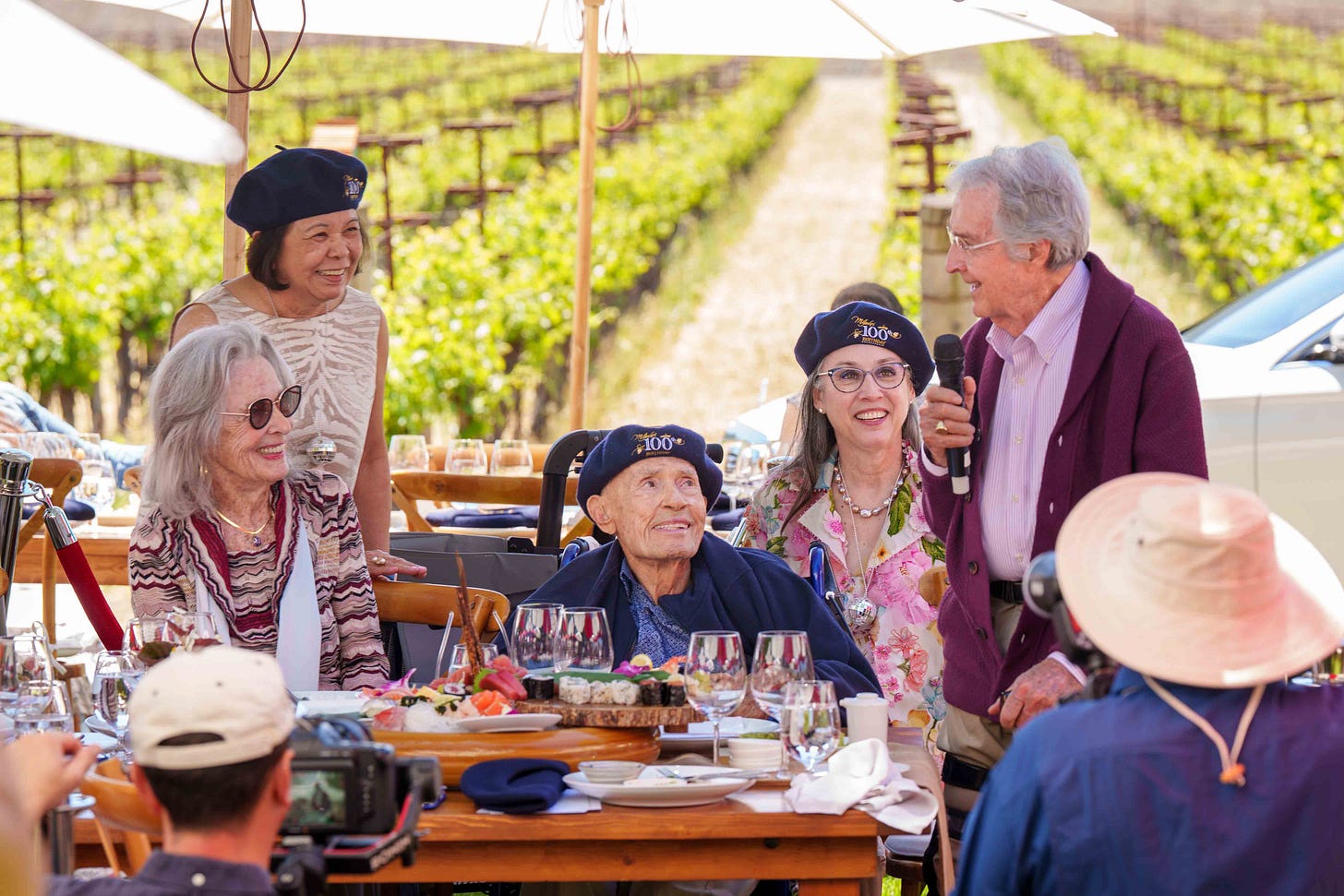
For Jeramaz, the benefits are practical as well as philosophical. Healthier soil, he said, means healthier vines, lower costs and fewer interventions. Grgich Hills farms its vineyards for roughly $11,000 per acre — well below the Napa Valley average of $15,000, he said.
Soil tests back up those savings. Annual reports from Regen Ag Lab show increases in soil organic matter, CO2 respiration and fungal networks across the estate. In just one year, the average SOM rose from 3.6 to 4.5 — a 126% increase. CO2-C, a proxy for microbial respiration, jumped 175%. Arbuscular mycorrhizae and other fungi — essential for nutrient uptake and plant immunity — were all on the rise.
In plain terms: the soil isn’t just healthier. It’s more active, more efficient, more biodiverse and more resilient.
“That’s where everything begins,” Jeramaz said. “Soil is not dirt. It’s alive. It breathes. And when it’s healthy, everything else follows.”
Building and protecting that living system requires consistent care. At Grgich Hills, the vineyard team relies on cover cropping, composting, no-till practices and rotational grazing to foster microbial diversity and structural integrity. One technique — roller crimping cover crops rather than mowing or tilling — has yielded surprising results.
Instead of cutting or discing the cover crop, the team rolls it flat, creating a three-inch mat of mulch. This layer acts as natural insulation, protecting the soil from heat and evaporation while maintaining microbial habitat.
The payoff was clear during the historic heatwave in September 2022, when temperatures in Napa Valley soared to between 108- and 118-degrees Fahrenheit.
“We measured our soil temperature under the rolled cover crop at about 90 degrees,” Jeramaz said. “On neighboring properties with bare or tilled soil, it was 175 degrees. That’s a massive difference.”
Vines across the region were stressed. In many vineyards, grapes shriveled into raisins and entire harvests were lost.
“Yes, we saw negative impacts,” Jeramaz said, “but we were able to harvest. That year cost the industry millions — but we still made wine.”
For Jeramaz, these outcomes are not just anecdotal — they point to the core promise of regenerative farming: resilience.
“Healthy soil insulates the root zone. It retains moisture. It keeps microbial life functioning even in extremes,” he said. “If you’re tilling, you’re not just breaking up the ground — you’re breaking the networks that protect your vines.”
That resilience was tested in 2020, when wildfire smoke blanketed Napa Valley during harvest. Many wineries chose not to bottle at all, fearing smoke taint. But at Grgich Hills, the fruit was healthy enough to make wine.
“Jancis Robinson gave us our highest score yet on that cabernet sauvignon,” Jeramaz said, pointing to a bottle from that vintage. “Most wineries didn’t even try to make wine that year. But we tested our grapes and our wine — no measurable smoke-taint compounds. It’s not magic. It’s biology.”
He attributes that result to the strength of their vines, bolstered by years of soil-first practices. “Healthy grapes can protect themselves,” he said. “Plants have always faced fire, drought, heat — they’ve evolved to survive it. Our job is to give them what they need to do that.”
The Role of Animals — and Discipline
That support system extends beyond microbes. Grgich Hills integrates livestock into its farming strategy — specifically, a flock of 300 sheep rotated through the vineyard on a tight schedule. Each day, the animals cover three acres, grazing on cover crops, aerating the soil with their hooves and contributing about two pounds of manure per animal. It’s an efficient cycle of nutrient return and ground management.
“The sheep do in one day what we could never do with machines,” Jeramaz said. “And they do it better.”
But he’s quick to caution that animal integration isn’t just a photo op.
“Sheep look great on social media,” he said, “but if you leave them too long in one place, they overgraze. They compact the soil. That’s not regenerative — that’s extractive.”
Overgrazing weakens vine roots. Compaction disrupts soil aeration and microbial habitat. To avoid that, the flock is carefully managed and moved daily. As with soil health, the benefit depends on precision and discipline — not aesthetics.
“This integration isn’t about marketing,” he said. “It’s a deliberate strategy to reduce disturbance and build structure in the soil.”
Terrain Over Tactics
The approach is grounded in what Jeramaz calls terrain theory — the belief that health comes not from eradicating problems, but from strengthening the whole system.
“Disease in plants is a symptom of imbalance,” he said. “Just like in people. If the terrain is healthy, pathogens have a harder time taking hold.”
That contrasts with “input farming,” his term for a 20th-century model built around control.
“Input farming is like going to war with everything that isn’t your crop,” he said. “See a bug? Kill it. A weed? Spray it. Sick soil? Dump fertilizer on it. But nature doesn’t work that way. It’s about balance, not dominance.”
Regenerative farming flips that script. Rather than excluding nature, it invites complexity back in. The vineyard becomes a collaborative space — not a battlefield, but a living system of relationships.
That includes the microbes in the soil, the sheep on the ground and the people who manage them. “Regenerative farming is about relationships,” Jeramaz said. “Between plants, animals, soil — and people.”
Winemaking That Reflects the Land
Although regenerative certification focuses on farming, not winemaking, Jeramaz sees a clear connection between the two.
“We don’t manipulate the wine,” he said. “We just let it express where it came from.”
At Grgich Hills, that means fermenting with only native yeast and using minimal sulfites. No added enzymes, no lab-cultured yeast, no flavor enhancement.
“If the grapes are healthy and balanced, there is little need to interfere,” he said. “The wine ferments itself.”
The goal isn’t to chase trends or maximize extraction. It’s to allow the vineyard to speak. “It’s all connected,” Jeramaz said. “Healthy soil, healthy vines, honest wine.”
That ethic of connection also extends to people. Regenerative Organic Certification requires more than environmental practices. It also includes labor protections, fair wages and giving vineyard crews a voice in decision-making. Jeramaz credits much of the winery’s commitment in this area to Violet Grgich, who now serves as president.
“Violet understands that her father’s important legacy isn’t just about honoring the past,” he said. “It’s about doing right by the land for the future— and by the people who care for it.”
That future, he added, won’t be shaped by clever marketing or technological fixes. Napa Valley is facing a layered set of pressures: rising input costs, prolonged drought, extreme weather swings, wildfire smoke and the inherent risk of monoculture farming. Regenerative farming doesn’t eliminate those threats — but it provides a system designed to adapt.
Healthier soils hold more water and buffer against heat. They build stronger root systems, reduce reliance on chemical inputs and foster microbial life that supports the vine’s natural defenses. Resilient vineyards require fewer interventions and respond better to shocks.
“It’s not about being perfect,” Jeramaz said. “It’s about being adaptive.”
That sensibility carries through to the finished wine. He describes recent vintages — especially 2021 and 2022 — as showing more sapidity, a term rarely used in tasting rooms. “Sapidity is that lingering sensation,” he said. “It means the wine has life. You can taste it — and you can feel it.”
A Quiet Commitment
Jeramaz isn’t chasing trends. He spends his time walking the vineyard, observing and learning. He follows soil scientists like Dr. Christine Jones and farmers like Gabe Brown. But mostly, he listens — to the vines, to the land and to the people around him.
“You can’t fake this,” he said. “You have to be out here, paying attention. Winemaking starts in the soil. And farming starts with showing up.”
At a time when the wine industry faces contraction, climate volatility and growing consumer skepticism, Jeramaz remains grounded. He sees value in transparency, honesty and a return to first principles — trusting in the wisdom of the ecosystem and those who care for it.
He turned toward the vineyard, the early spring sun catching the rows behind him.
“We don’t so much as own this land, as belong to it, for a time,” he said. “How we care for it will be remembered by those who come next.”
—
Tim Carl is a Napa Valley-based photojournalist.





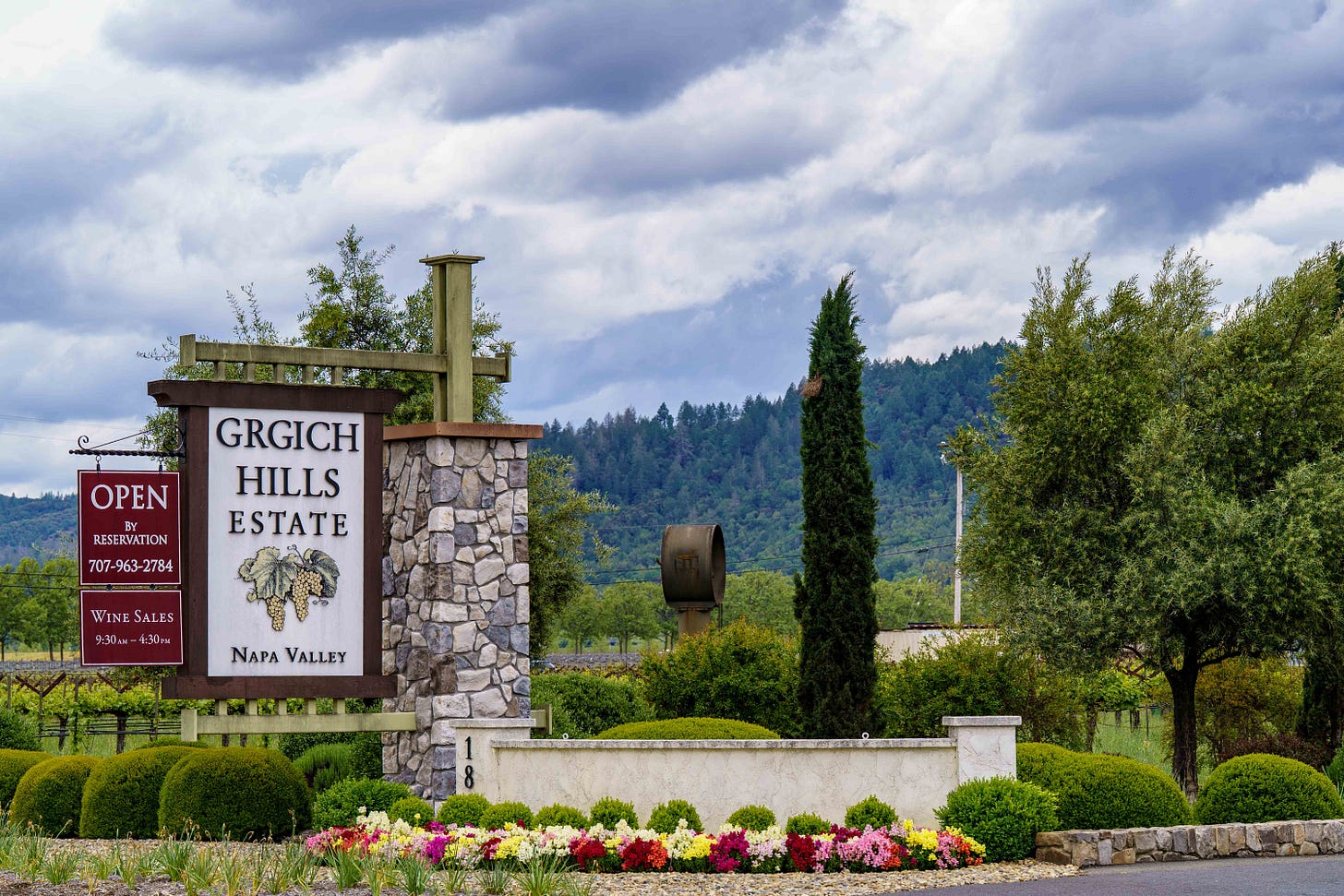





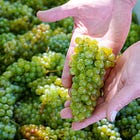
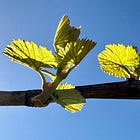


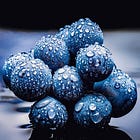



Thank you again for a very informative and interesting article about how one Valley winery is approaching their land and grapes. I learned more than I knew before about regenerative land management, and I appreciate the approach. I will look at their land differently the next time I am in the Valley.
I would love to know how Grgich blocking the final section of the bike path plays into their claimed environmental focus. How does making every visitor to their winery drive make their winery more sustainable and better for the environment?